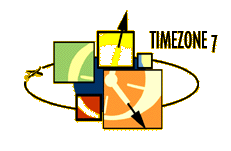
[click to zoom]
[click to zoom]

[click to zoom]

[click to zoom]

[click to zoom]

[click to zoom]

[click to zoom]

[click to zoom]

[click to zoom]

[click to zoom]
|
 |
Bikaner December 23 - 26, 1998
Bikaner | Part I | Part II | Part III | Part IV | Part VThe town of Bikaner, although quite large (population
500,000), is relatively unpopulated by tourists (thanks in part to the negative review it
received in the Lonely Planet). This shortage of tourists goes a long way in explaining
how we got a huge, clean room for four in a brand new hotel for a mere 250 rupees a night
($6.25 US). When we stepped off the bus, we were immediately ensconced in rickshaw
drivers. After much dickering over the price, we hired two rickshaws who agreed to take us
to the central, but small, backpacker's area. Instead, we were taken to the Hotel Harasar
Haveli. Skeptical, because the touts usually bring us to dumpy places where they receive
commissions, we were happily surprised to be shown this desert jewel! Our inquiry about a
camel tour to Jaisalmer was met by the familiar Indian saying, "Not possible!"
According to Sadat, the hotel owner, this trip would take nearly 14 days. As we sat on the
rooftop garden, Vino mysteriously appeared. Vino is the proprietor of "Vino's Desert Wind Safaris". He explained our options, and sold us on a one-week long camel safari
from Bikaner to Phalodi (which is about half the distance to Jaisalmer). In Phalodi, we
could catch a three hour bus the rest of the way to Jaisalmer.
Several people informed us that two days on a camel would
be a day and a half too much. We decided that six days would be perfect. Since most camel
treks leave from Jaisalmer, leaving from Bikaner allowed us to bypass all the other
tourists, Pepsi stands, and Kodak booths. This chance detail proved to be one of the
greatest aspects of our trek - we saw absolutely no one other than locals (though at times
being so far away from civilization can be a bit frightening, as you shall see).
Christmas in Bikaner was very different than Christmas at
home. There were virtually no lights, and definitely no songs, advertisements or presents
(lack of foresight dictating the latter). At home even non-Christians are caught up in the
holiday spirit. In Bikaner, the average dude doesn't even know about Christmas. But be
that as it may, we did end up having a special Christmas Eve at the Harasar Haveli. Some
traditional Rajastani musicians and dancers were hired to entertain the western guests,
and even though there were no "Jingle-bells" to be heard, we were happy to
receive some free cake from a group of Swedish tourists who had just arrived that
afternoon. We figured the cake made up for the fact that we had to sleep on the floor of
Sadat's house as a result of losing our room to them.
After handing over 7,000 rupees to Vino (half payment for
the trek), and receiving, as a receipt, a slip of scratch paper that said basically,
‘Vino owes you one camel safari,’ we headed out on foot to check out some of the
local sights. Bikaner, in the tradition of most cities in Rajastan, has a big fort and
palace. It was nice, but we'd seen better (a little jaded? You bet). The Jain temples were
interesting, but the definite highlight of Bikaner was investigating the numerous
mansions, called havelis, which were built by rich spice traders during the early part of
this century, and are scattered throughout the old part of the city. As we were walking
back to Hotel Harasar Haveli after our tour of the city, we couldn't help but comment on
how impressive the clean streets of Bikaner were. It was about this time that we began to
smell something quite onerous. It became increasingly overwhelming until, finally, we came
upon the answer to what was producing the smell as well as the answer to the clean street
mystery - a medium-sized lake, which obviously served as the city's dump. Bikaner | Part I | Part II | Part III | Part IV | Part V |

